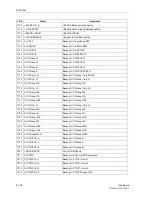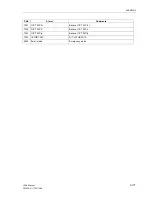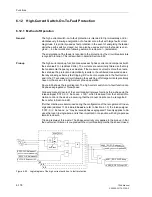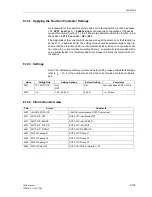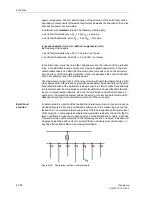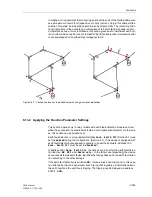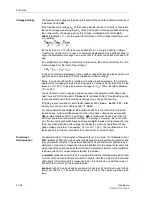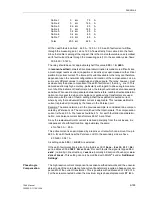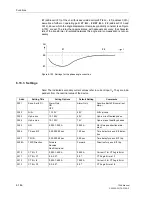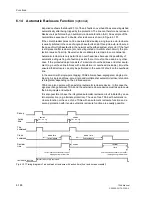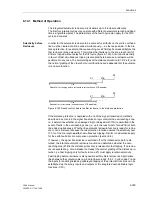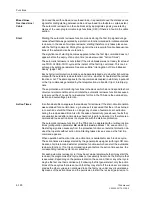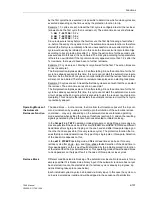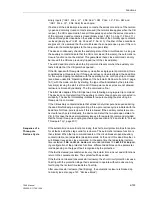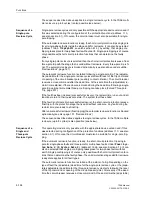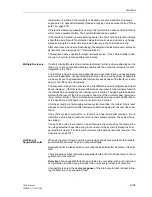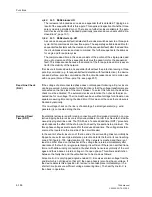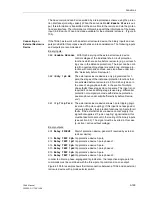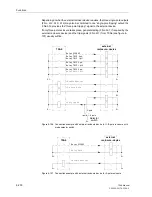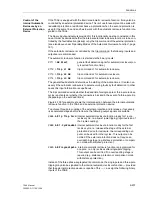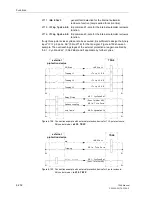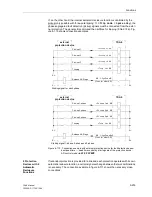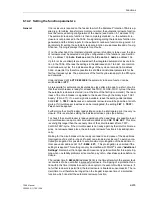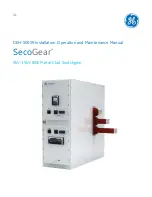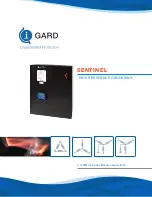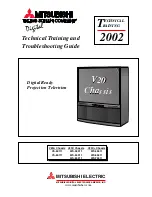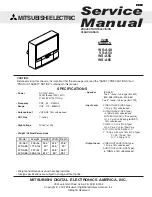
Functions
6-190
7SA6 Manual
C53000-G1176-C156-2
Mixed Lines
Overhead Line /
Cable
On mixed lines with cables and overhead lines, it is possible to use the distance zone
signals for distinguishing between cable and overhead line faults to a certain extent.
The automatic reclosure can then be blocked by appropriate signals generated by
means of the user-programmable logic functions (CFC) if there is a fault in the cable
section.
Start
Starting the automatic reclosure function means storing the first trip signal during a
network fault that was generated by a protection function intended to initiate automatic
reclosure. In the case of multiple reclosure, starting therefore only takes place once
with the first trip command. Storing this signal is the prerequisite for all subsequent ac-
tions of the automatic reclosure function.
The significance of starting becomes apparent when the first trip command does not
appear before the expiry of an action time (see below under “Action Times”).
The automatic reclosure is not started if the circuit-breaker was not ready for at least
one TRIP–CLOSE–TRIP–cycle at the instant of the first trip command. This can be
achieved by setting parameters. See also subtitle “Interrogation of Circuit-Breaker
Ready” (page 192).
Each short-circuit protection function can be parameterized as to whether it should op-
erate with the automatic reclose function or not i.e. whether it should start the reclose
function or not. The same applies to the trip commands coupled in via binary input and/
or the trip commands generated by the teleprotection via transfer trip or intertrip sig-
nals.
Those protection and monitoring functions in the device which do not respond to short-
circuits or similar conditions do not initiate the automatic reclosure function because a
reclosure will be of no use here. Examples for this in the 7SA6 are the overload pro-
tection and overvoltage protection.
Action Times
It is often desirable to suppress the readiness for reclosure if the short-circuit condition
was sustained for a certain time, e.g. because it is assumed that the arc has burned
in to such an extent that there is no longer any chance of automatic arc extinction
during the reclose dead time. Also for the sake of selectivity (see above), faults that
are usually cleared after a time delay should not lead to reclosure. It is therefore rec-
ommended to use action times in conjunction with the distance protection.
The automatic reclosure function of the 7SA6 can be operated with or without action
times (configuration parameter
AR control mode
, address
134
, see section 5.1).
No starting signal is necessary from the protection functions or external protection de-
vices that operate without action time. Starting takes place as soon as the first trip
command appears.
When operation with action time, an action time is available for each reclose cycle.
The action times are always started by the general pickup signal (with logic OR com-
bination of all internal and external protection functions which can start the automatic
reclosure function). If no trip command is present before the action time expires, the
corresponding reclose cycle is not carried out.
For each automatic reclose cycle it may be set via parameter whether it may start the
recloser (the programmed first cycle does not necessarily have to be the first cycle that
is executed - depending on the parameterization, the second, third or any other cycle
may be the first one that is carried out). Following the first general start, only the action
times of those cycles that are set such that they may start off the recloser are consid-
ered as the other cycles are not allowed to be the first cycle under any circumstances.
By means of the action times and the permission to start the recloser (permission to
Summary of Contents for siprotec 7SA6
Page 2: ...Siemens Aktiengesellschaft Book No C53000 G1176 C156 2 ...
Page 18: ...xviii 7SA6 Manual C53000 G1176 C156 2 ...
Page 32: ...Introduction 1 14 7SA6 Manual C53000 G1176 C156 2 ...
Page 82: ...Hardware and Connections 2 50 7SA6 Manual C53000 G1176 C156 2 ...
Page 119: ...SIPROTEC 4 Devices 4 25 7SA6 Manual C53000 G1176 C156 2 Figure 4 20 CFC Logic example ...
Page 190: ...Configuration 5 62 7SA6 Manual C53000 G1176 C156 2 ...
Page 652: ...Installation and Commissioning 8 78 7SA6 Manual C53000 G1176 C156 2 ...
Page 724: ...Technical Data 10 56 7SA6 Manual C53000 G1176 C156 ...
Page 800: ...Appendix A 76 7SA6 Manual C53000 G1176 C156 2 ...
Page 866: ...Appendix B 66 7SA6 Manual C53000 G1176 C156 2 ...

